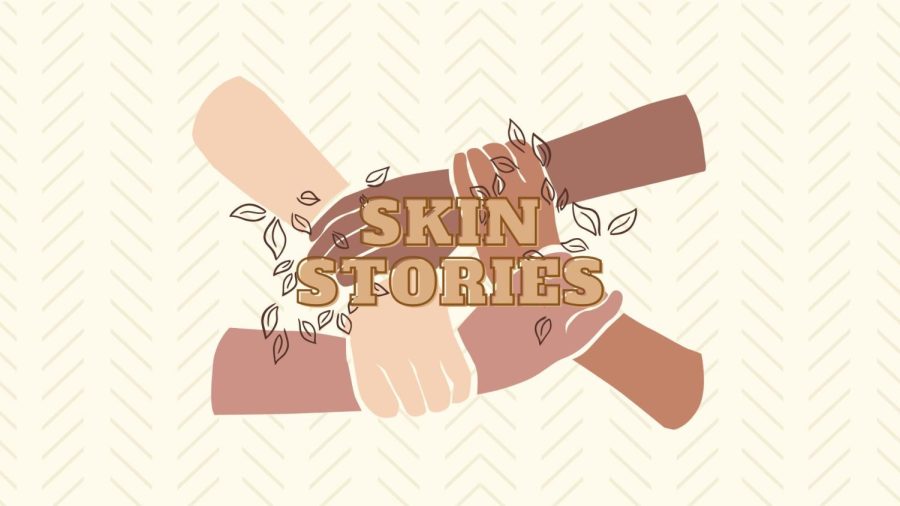‘Spiritual and radical becoming’: APIDA artists discuss using tattoos to collect stories on skin
At Tattoo Talk: Bodily Ritual and Art in APIDA Communities, two panelists shared the stories behind their tattoo practices.
May 11, 2023
Multicultural Student Affairs hosted “Skin Stories — Bodily Ritual and Art in APIDA Communities” on Wednesday, inviting panelists Rin Jung and Janani Nathan to share their experiences with tattoo artistry.
During the talk, tattoo artists Jung and Nathan discussed the ideas that inform their tattoo practices. They described their journeys in tattooing, as well as how tattooing serves as a space to build connections.
Jung said they think of their tattooing as a way of “spiritual and radical becoming.” They referenced French philosopher Gilles Deleuze, who discusses the notion of “becoming” in contrast to “being.”
“Being” is static and meant to be preserved, according to Jung. But “becoming” is constantly shifting — a concept reflected in their tattoo practices, they said.
“There’s no such thing as how our bodies are supposed to look,” Jung said. “Once you acknowledge the fluctuating and nonessential state of yourself and your body, our practices, like my tattooing, become spiritual.”
MSA graduate assistant Grace Park said she resonated with Jung’s reference to Deleuze. She said she appreciated how Jung embraced the ambiguity and transformation of the body — especially since she said tattoos aren’t always permanent, fading as skin regenerates.
Tattooing provides active human connection, Nathan said, as two people sit together for hours on end to create art. For Nathan, hand poking tattoos becomes a “slow, meditative process.”
Nathan also emphasized the importance of trust in tattooing. In tattoo studios, some clients may feel like they aren’t allowed to ask questions or take a break, they said.
“You’re making a permanent, painful change to your body that you are consenting to, and it’s a beautiful change,” Nathan said. “The power of the client is so important to return to them and to treat tattooing like a collaboration.”
On social media, many people describe receiving tattoos as a form of therapy or describe their tattoo artists as therapists, Park said. Tattoo artists are in charge of taking care of skin, and she said the placement of ink constitutes an intimate process.
During the talk, Park described the reciprocal relationship between a tattoo artist and the client.
“It’s not just the person who is receiving some therapeutic experience,” Park said. “It’s the artist themselves, or the practitioner of the two, who is also benefiting from that relationship.”
Jung, who also makes documentaries, spoke about the connections between their artistic disciplines. Tattooing has inspired some of their documentary topics, they said. Through art, Jung contemplates violence, as well as the resistance to violence.
“Forgetting in this contemporary, capitalist society is a way of violence,” Jung said. “Documentary filmmaking is a kind of way to resist that.”
Like filmmaking, tattooing is a form of documentation, Park said. In a world prone to erasure, these practices require people to remember the fact that violence occurred, she said.
Park reiterated Jung’s and Nathan’s comments of tattooing as a form of education. Tattooing is a place to interrogate, learn and unlearn things, she said.
Tattooing helped Nathan learn more about the Tamil Hindu culture they grew up in. It also held them accountable to doing the research on designs like kolam, they said, before permanently marking a body with them.
Nathan said they’ve discussed with South Asian clients their feelings of sharing cultural designs with clientele who do not have connection to a specific symbol’s history. Now, Nathan reserves certain flash sheets for South Asian clients. For example, ‘Flash Sheet L’ features religious imagery with cobras and lotuses, outlined in bright colors.
For a recent project, Jung was inspired by the Korean shamanistic practice of bujeok — Korean and East Asian Daoist incantations and magic symbols, written or painted as talismans.
As a tattooer, Jung said they hope to take on the role of a shaman. Jung starts by listening and incorporating the client’s stories into the tattoo design. Jung’s bujeok tattoos have a comprehensive form, so they can create a collaborative piece with clients.
“In both of your tattoo practices, you strive to collect the stories of the people you are creating the designs for,” Park said. “The overlap between tattoos and teaching is really important.”
Email: [email protected]
Twitter: @JessicaMa2025
Related Stories:


